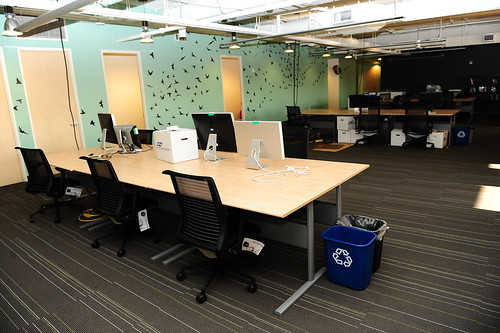Today, I spoke to Vitor Lourenço, who is a 22 year old Product Designer for Twitter. In this interview, we get the inside scoop on what it’s like to work for Twitter, what a typical day is like, how to get a job there, and much more. Vitor really paints the picture for what Twitter is like from the inside and I’m really excited to share it with you!
What has your experience been like working for Twitter?
It’s been one of my most remarkable work experiences so far. I feel really lucky to be part of the team, since we have a great product and so many interesting people around. In addition to that, the company has a bottom-up approach to the way projects and ideas flourish, so I’ve been finding huge opportunities to make an impact. Also, we have a clear and challenging goal of fostering the open exchange of information—and it’s amazing how much the company has already accomplished—even though this is just the beginning.
What is a typical day like in and out of the office? 
We work from an amazing office located in SOMA, San Francisco. It’s very open, has tons of windows and an awesome collaborative workspace. There’s free breakfast and lunch, and a fully-stocked kitchen with snacks and drinks. You should take a look at some of our office photos—It’s incredible. Outside of the office, I mostly build other types of stuff I enjoy. Making cool things is just something I love doing, so I usually work at home from 11pm to 3am, and I do my best to be awake by 10am. I’m definitely not a morning person, and I do my best work during late hours.
How did you get your job at Twitter and how do you recommend other people go about seeking jobs these days?
In 2007 I designed and developed a Twitter mashup called FoodFeed. It had a very simple concept around allowing people to track their eating habits through Twitter. A few months after the website went live, I got featured at Wired Magazine and some other interesting publications. That’s how Evan Williams (one of the co-founders of Twitter) ended up finding FoodFeed. He liked the concept and invited me to do some design work for Twitter. One year later I would find myself moving from Brazil to San Francisco to work full-time for the company.
I believe job satisfaction is directly related to being able to work on stuff you’re good at. If you’re a creator of things and want to find an amazing job today, my advice would be for you to keep building interesting stuff—It’s very important to be entrepreneurial, passionate about making an impact and have the ability to get things done quickly. And if you’re integrating the Twitter API somehow into your ideas, there’s even a bigger chance that you could end up working at Twitter. We’re still a small company, which means that everyone who joins the company right now can have a big impact.
How do you use Twitter both personally and professionally?
My life doesn’t have a clear separation of personal and professional stuff. I think I’m somewhere in between all the time, and that’s reflected in the way I use Twitter. Most of my friends are previous co-workers that share similar interests and ideas—so we’re always talking about design, code and funny YouTube videos. Other that, I use Twitter mostly to follow people that I admire and to keep track of interesting stuff going on around me.
What role will microblogging play in the future? How integrated will it be with life, business, etc?
People are clearly becoming more comfortable with sharing information online. Through Twitter they’re already following the most relevant sources and accessing information as it happens. So, I would say that “microblogging” is going to be so much integrated into our lives that we won’t even think about it anymore. However, in order to get there faster, we have to do a better job around exposing the benefits of sharing what’s happening. One way of doing that would be to better understand what’s being shared and expose meaningful information that could help people making better decisions.
———
Vitor Lourenço is a 22 year old Product Designer. At such a young age, Lourenco’s designs have reached millions of people through his work at Twitter, the free social messaging utility that is changing the way people communicate. Previous to that, Lourenço designed interfaces for Yahoo! (the most visited website in the world) and TV Globo (the largest media company in Latin America). Featured as the “Precocious Design Star” at ReadWriteWeb and “The Design Mind Behind Twitter” at FastCompany, Lourenço started crafting user experiences at the age of 12 and has never stopped since then.








